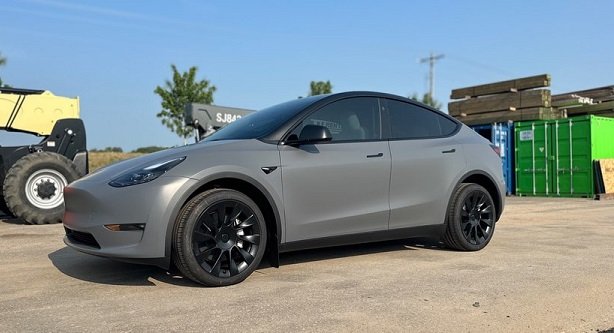

Tesla Faces a New Era: Navigating Challenges in the EV Market
For the first time in over a decade, Tesla, the once-unstoppable force in the electric vehicle (EV) industry, is facing headwinds. The year 2024 marked a turning point, with a slight dip in annual deliveries—a significant development for the EV giant that had long been a market leader.
While China offered a lifeline with strong demand, a global economic slowdown and rising competition from both established automakers and emerging players have placed Tesla under pressure. The road ahead is no longer as smooth as it once was.
A New Reality for Tesla
Looking back to 2011, Tesla was a fledgling company navigating the uncharted waters of EV production. Back then, a small dip in sales might have been overlooked as part of the company’s growing pains. Fast forward to 2024, and the stakes are far higher. Tesla now operates in a crowded marketplace, contending with rivals like Rivian, Ford, General Motors, and newer entrants offering compelling alternatives to Tesla’s vehicles.
The Cybertruck’s Disappointing Debut
The much-anticipated Cybertruck, once seen as Tesla’s next big breakthrough, failed to deliver the expected boost in sales. Meanwhile, demand for Tesla’s premium models softened as competitors began to fill the gaps in the market with diverse and often more affordable options.
Challenges in Key Markets
The U.S. Market: A Shifting Landscape
Tesla’s home turf, the U.S., presented its own set of challenges. An aging product lineup and the growing appeal of hybrid vehicles and traditional gas-powered cars eroded Tesla’s once-dominant market share. Early adopters who once flocked to the brand now face an array of enticing alternatives.
China: A Double-Edged Sword
China, one of Tesla’s most critical markets, has been both a blessing and a challenge. While strong demand in the country provided much-needed support, local EV manufacturers like BYD and Li Auto are gaining ground rapidly. The fierce competition in China demands agility, innovation, and competitive pricing to sustain Tesla’s position.
The Road Ahead for Tesla
Industry analysts suggest that Tesla’s way forward lies in diversifying its lineup and appealing to a broader audience. Introducing more affordable models, such as a budget-friendly Model Y, could help Tesla tap into the mass market. By lowering price points, Tesla could attract price-sensitive consumers and regain momentum.
At the same time, innovation remains crucial. Tesla must adapt to changing consumer preferences, improve its aging product lineup, and explore new opportunities in the rapidly evolving EV landscape.
A Wake-Up Call for the EV Pioneer
This slight stumble in 2024 serves as a wake-up call for Tesla. The company that once revolutionized the EV industry now faces the challenge of maintaining its leadership in a fiercely competitive market. With strategic innovation and a renewed focus on affordability, Tesla can rise to the occasion and secure its place as a global leader in the EV sector.
The road ahead may be uncertain, but one thing remains clear: Tesla’s ability to adapt and innovate will determine its success in this new era.
Afsheen Gohar is a seasoned writer with a wealth of experience in crafting authentic and well-researched articles. Her dedication to delivering high-quality content is evident in her work, where she combines a passion for storytelling with a commitment to accuracy and depth. Afsheen’s writing reflects her ability to engage readers with compelling narratives while providing valuable insights on a diverse range of topics.
Add a comment Cancel reply
Categories
- Auto News (959)
- Bike Launches (25)
- Car Launches (57)
- Car Prices (36)
- Car Reviews (9)
- Easy Installments (69)
- Electric Vehicle (52)
- Electronic Bikes (41)
- Motorcycle Prices (11)
- Motorcycle Reviews (7)
- Other News (40)
- Uncategorized (43)
Recent Posts
Popular Tags
Related posts


Islamabad Bans Smoke-Emitting Vehicles from Entering City

Suzuki Alto Sale Increased by Massive 179% in June 2025

FBR Blocks Manual Vehicle Auction Entries in WEBOC After ID Misuse Discovered
Welcome to Auto Power, Pakistan’s premier destination for motorcycles, scooties, and electric bikes. Additionally, our website keeps you updated with the latest news from the auto sector, ensuring you stay informed about the newest trends, releases, and advancements in the industry.
- Shop No 05 & 06, Ruby Arcade, A.M.20, Frere Road/Off Akbar Road, Karachi.
- Shop Timings 11:00 AM to 8:30 PM
- 0322-2578859 | 021-32717777
- sales@autopower.com.pk
- Shop No 05 & 06, Ruby Arcade, A.M.20, Frere Road/Off Akbar Road, Karachi.
- (+92) 322-2578859
- sales@autopower.com.pk
Latest News
- All Posts
- Auto News
- Bike Launches
- Car Launches
- Car Prices
- Car Reviews
- Easy Installments
- Electric Vehicle
- Electronic Bikes
- Motorcycle Prices
- Motorcycle Reviews
- Other News
- Uncategorized






© 2025 AutoPower All Rights Reserved.






